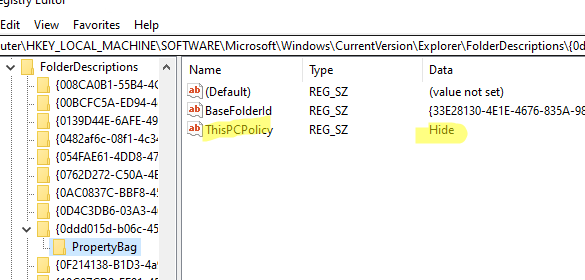Libraries is a Windows 11 system folder that is hidden by default. This folder allows users to include several folders stored on the local computer or remote storage location to browse and access them from a single place. This is a handy place to have important folders that you want to access quickly. Instead of navigating through File Explorer to find your important folders, you can aggregate content from multiple storage locations into a single folder (Libraries), so you quickly and easily find them.
When you include a folder in the libraries folder, it doesn’t physically move or occupy more storage on your hard disk in any way. Folders aren’t duplicated, and you will not lose physical storage. It simply gives you quick access to the content from a unified location. That means if you include the 100GB folder in the Libraries folder, it will not copy the 100GB storage in the Libraries folder.
Moreover, Camera Roll, Documents, Music, Pictures, Saved Pictures, and Videos folders automatically get included in the Libraries folder when you enable this feature. You can see the libraries folder on your computer located at %AppData%\Microsoft\Windows\Libraries.
How to Show or Hide the Libraries folder on Windows 11 File Explorer using Folder Options?
By default, the Libraries folder is hidden on Windows 11. To bring back the Libraries folder in File Explorer, you must navigate to Folder Options. Here is how to do it.
Step 1. First, open File Explorer by pressing the Windows + E keys from the keyboard or clicking on its icon on the taskbar.
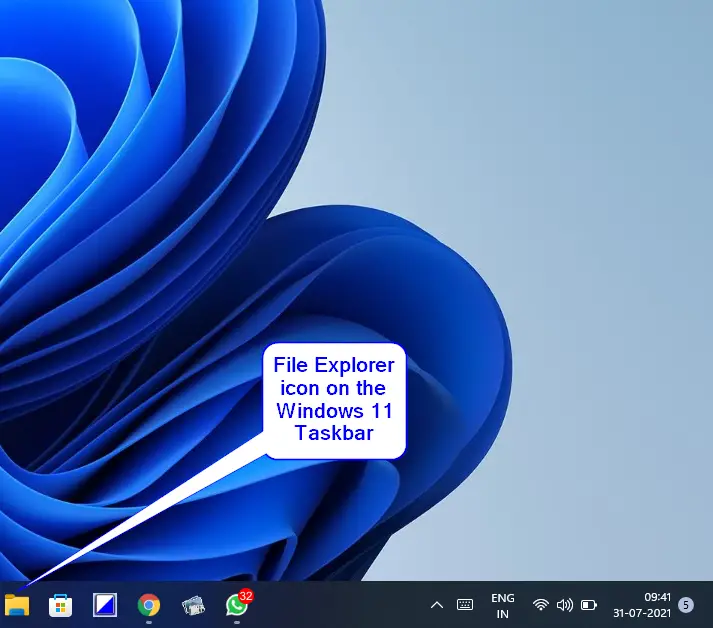
Step 2. When File Explorer opens, click the ellipse (three dots) on the taskbar menu and select Options from the pop-up menu that appears.
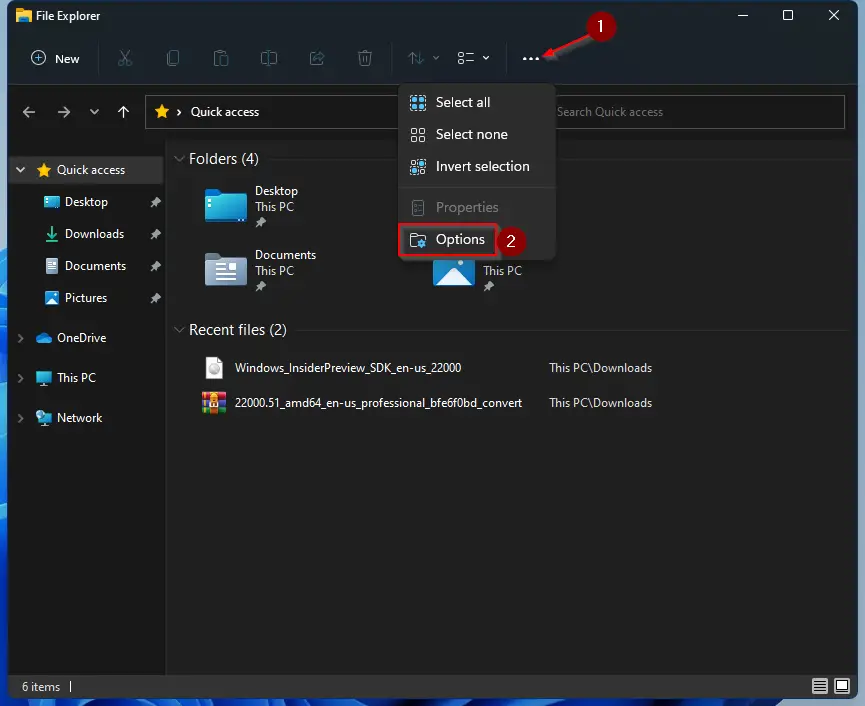
Step 3. Once you’re done, the Folder Options opens.
Step 4. Navigate to the View tab in the “Folder Options” window and then scroll down to find the Navigation pane section under Advanced settings.
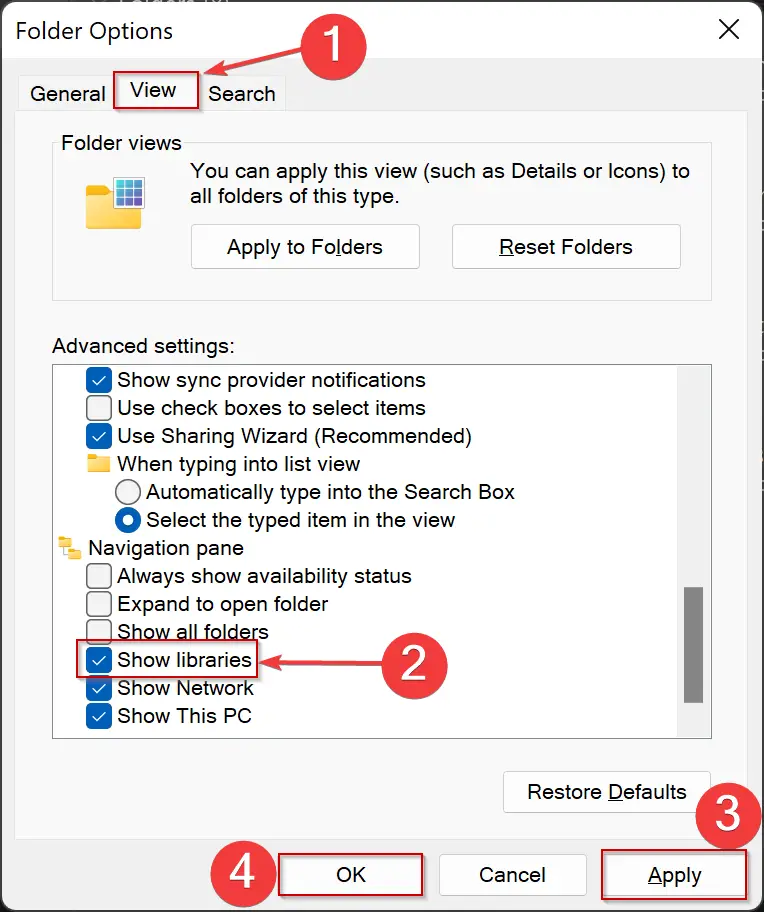
Step 5. Check the option Show libraries.
Step 6. Click Apply.
Step 7. Click OK.
Now, the Libraries folder will appear in File Explorer in the left navigation panel.
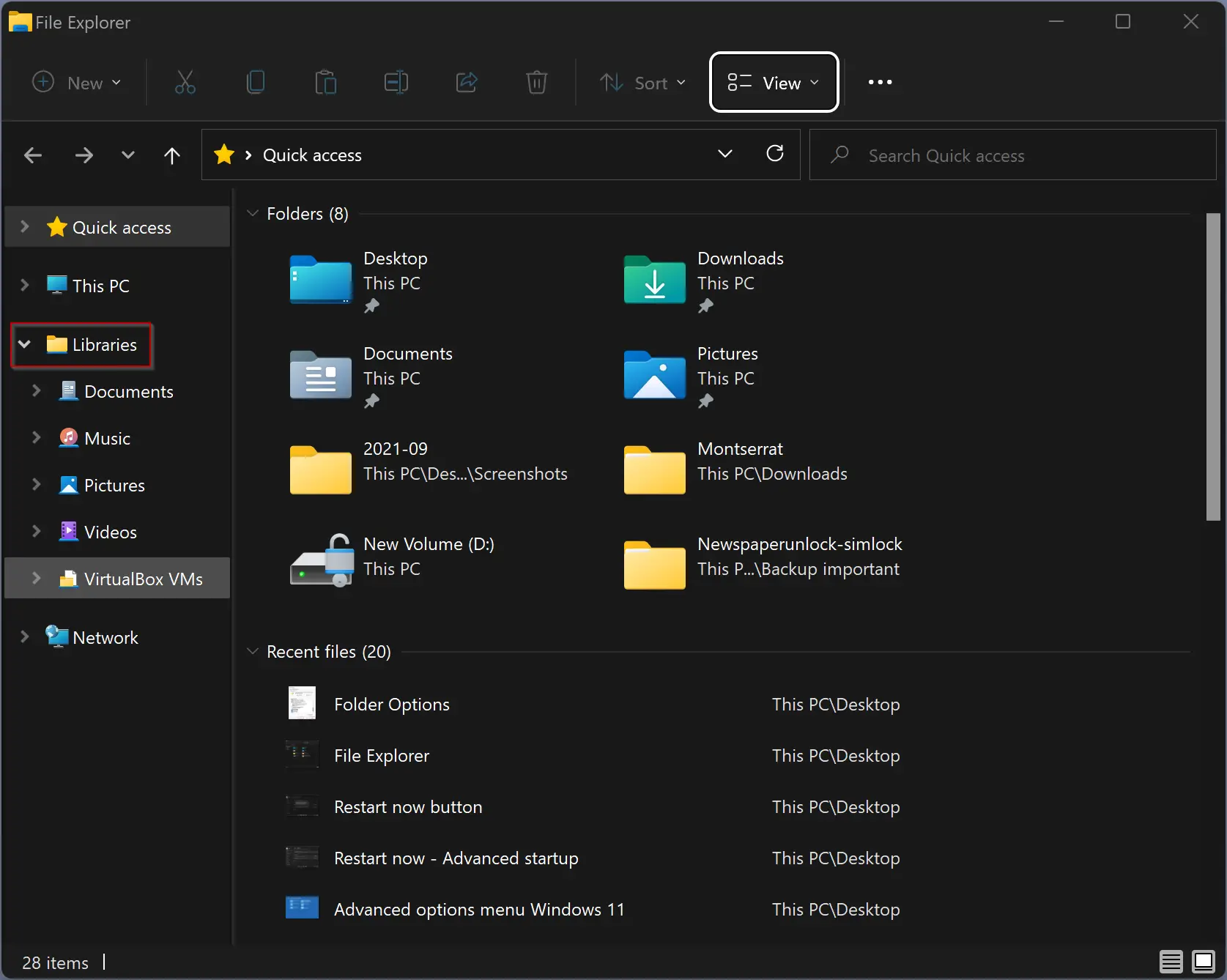
If you want to hide the Libraries folder from the File Explorer, repeat the above steps, and in step 5, uncheck the option Show libraries.
That’s it. According to your wish, you can show or hide the Libraries folder in File Explorer.
How to Add Folders to the Libraries on Windows 11?
After enabling the Libraries folder, you can add or remove folders from the Libraries. To add a folder in the Libraries folder, do the following steps:-
Step 1. Open File Explorer and navigate to the folder you want to add to the Libraries.
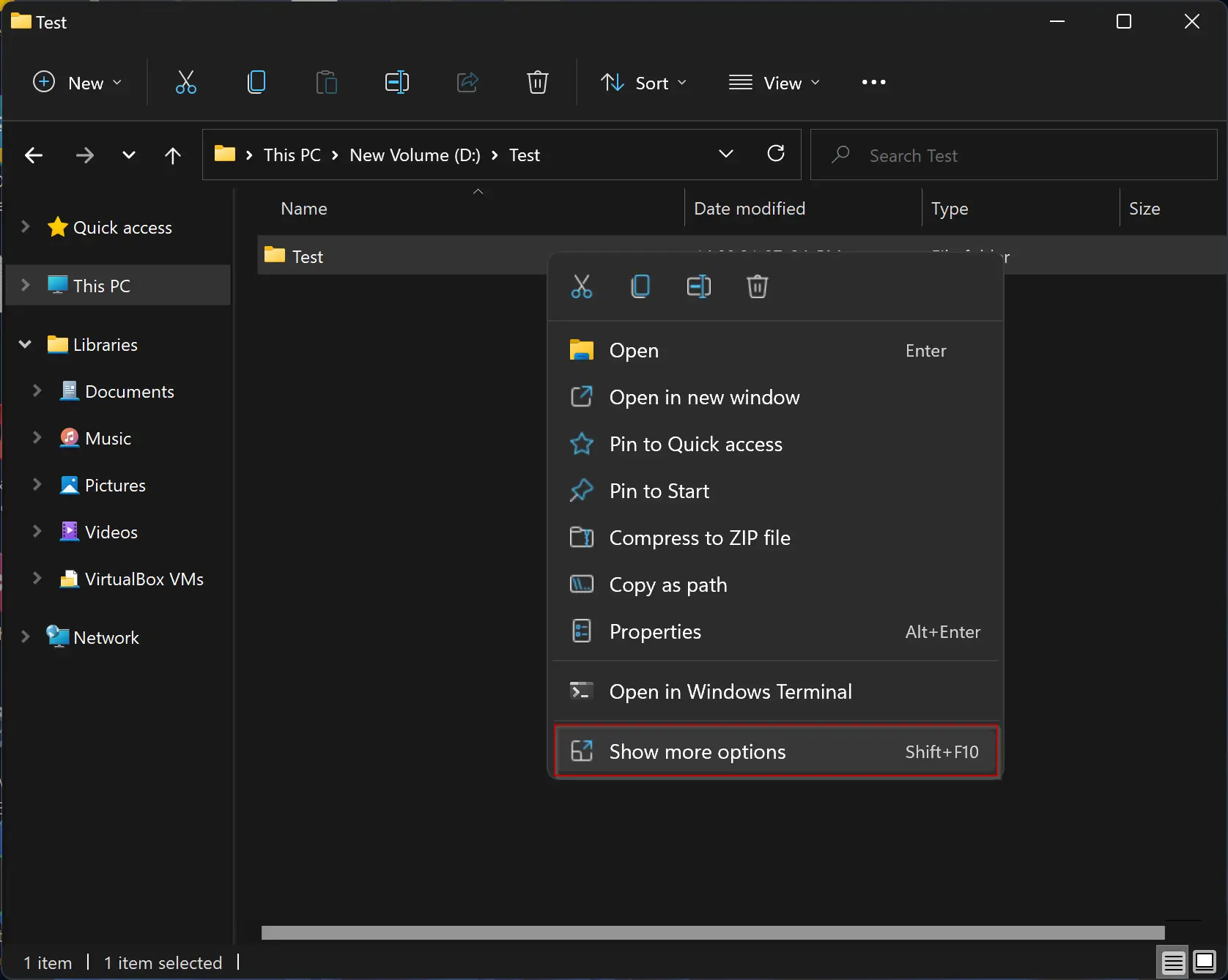
Step 2. Right-click on the folder and select Show more options.
Step 3. On the more option context menu, select Include in library and then either select the existing folder or click Create new library.
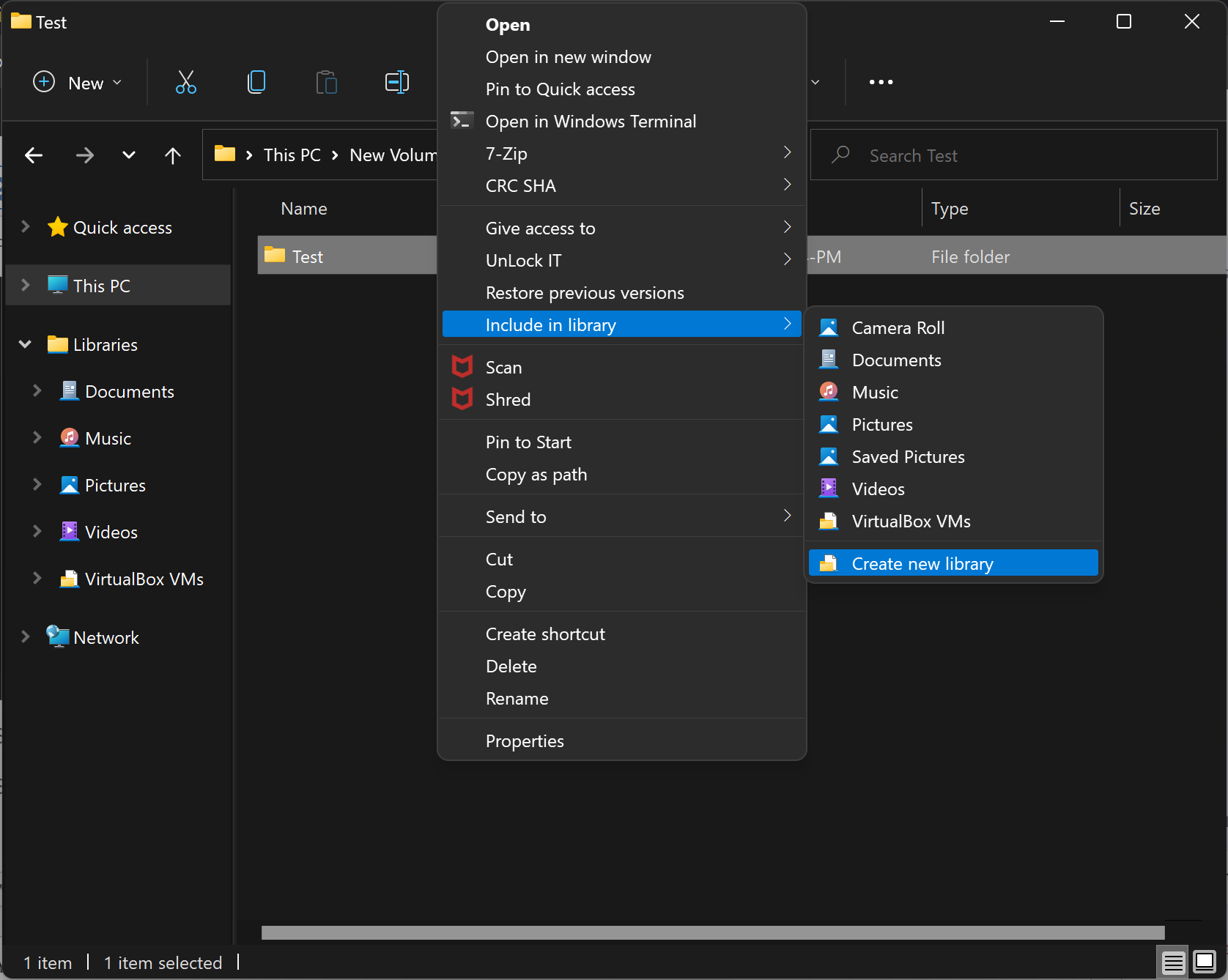
Now, the chosen folder will appear in the Libraries folder. If you want to remove any folder from the Libraries folder in Libraries, right-click on them and select the Delete icon.
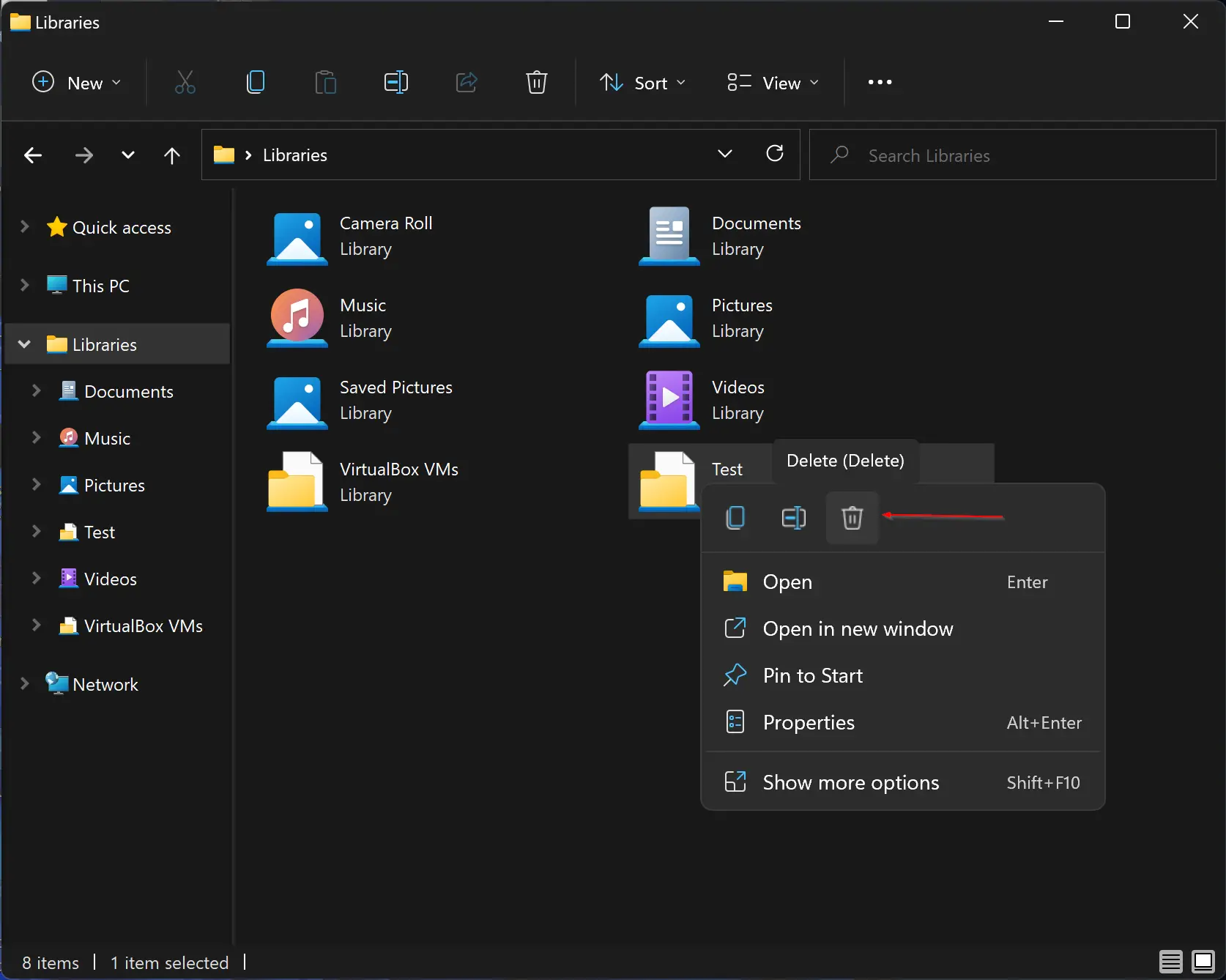
Please note that if you remove a folder from the Libraries folder, it will be removed from the Libraries folder only (just like deleting a shortcut icon); your folder will remain safe in its original place.
How to Add or Remove the Libraries folder using File Explorer in Windows 11?
It is also possible to add or remove the Libraries folder on Windows 11 File Explorer Navigation Pane using File Explorer. To show or hide the Libraries folder using File Explorer, do the following:-
Step 1. First, press the Windows + E hotkey to open File Explorer.
Step 2. Then, right-click inside the navigation pane and check or uncheck the option Show libraries to add or remove Libraries from File Explorer.
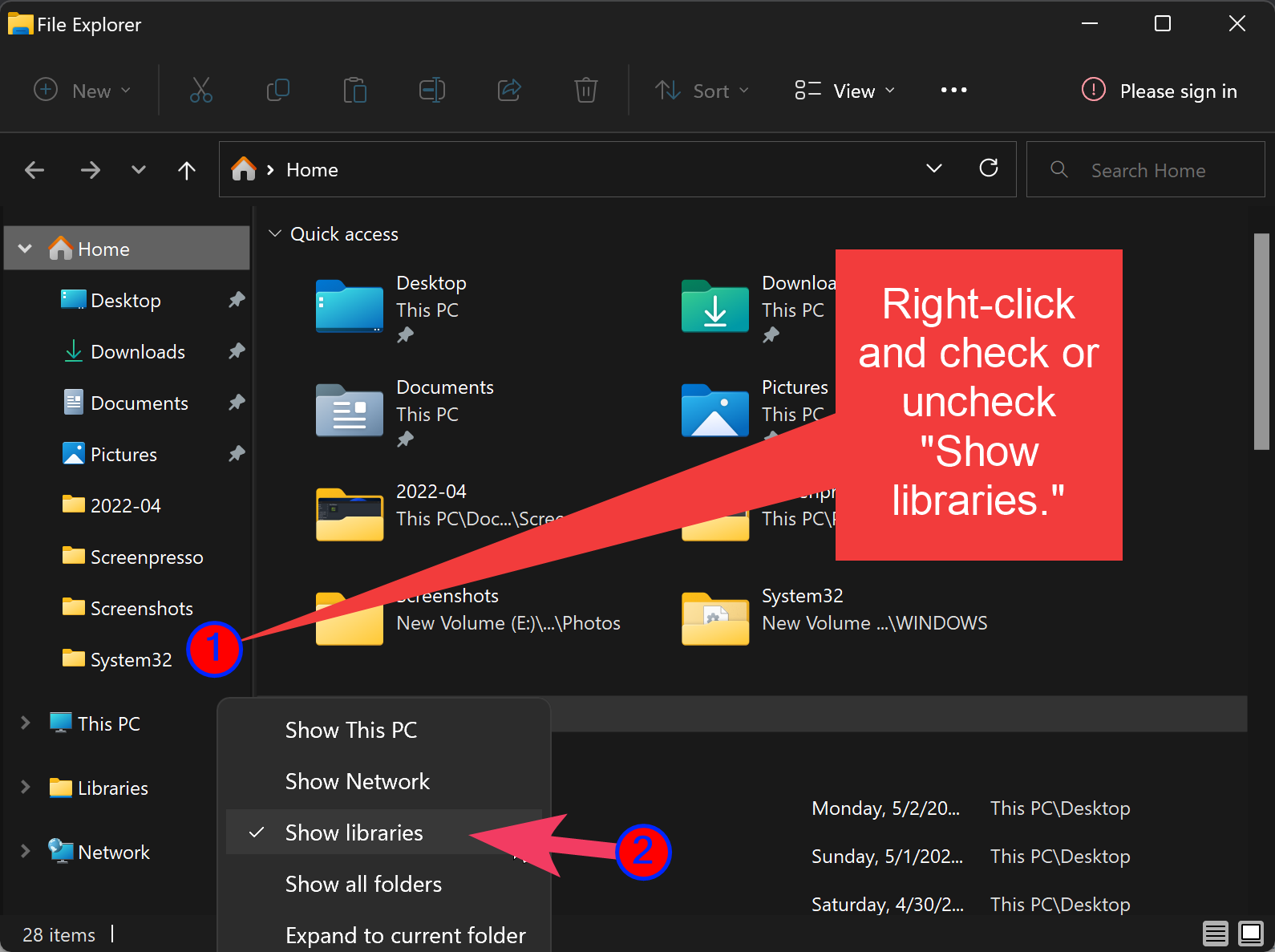
How to Hide or Unhide the Libraries folder using Registry Editor in Windows 11?
If you prefer to use Registry Editor to modify different settings in Windows 11, use the following steps to hide or unhide Libraries:-
Step 1. Very first, open Registry Editor.
Step 2. After that, navigate to the following key on the left side of Registry Editor:-
HKEY_CURRENT_USER\Software\Classes\CLSID\{031E4825-7B94-4dc3-B131-E946B44C8DD5}
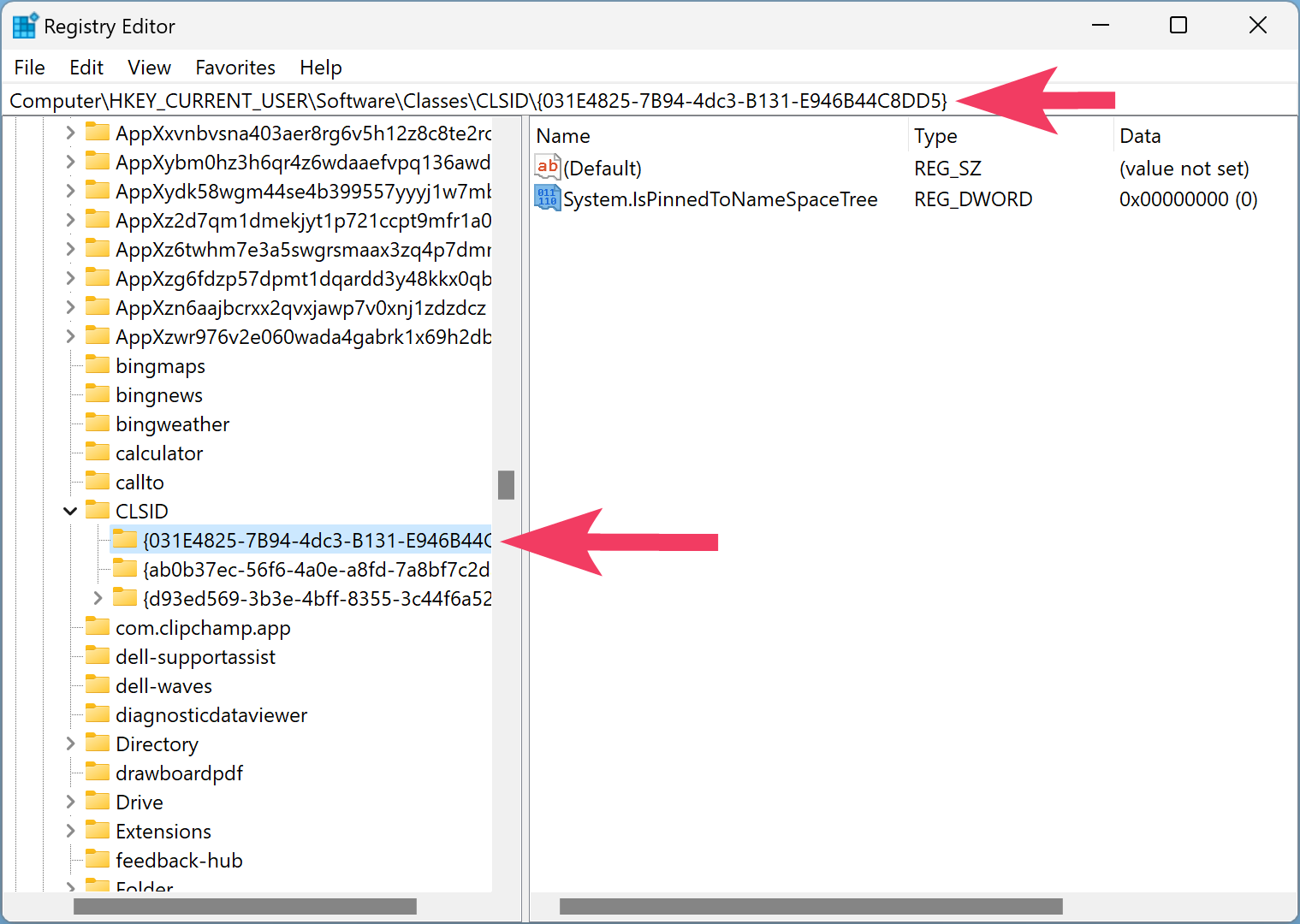
Step 3. Next, on the right-hand side, double-click on the System.IsPinnedToNameSpaceTree REG_DWORD and set “Value data” to 1.
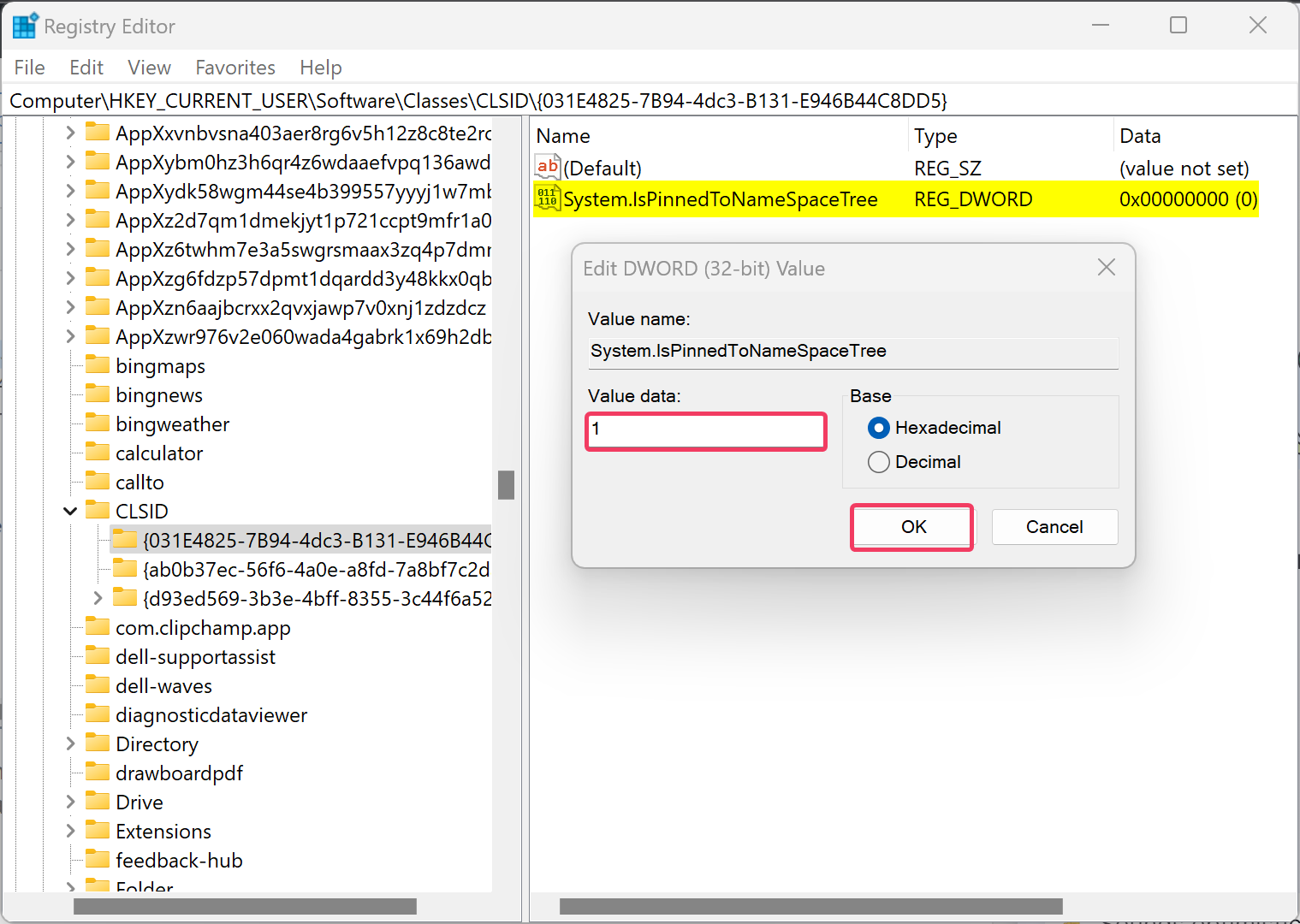
Step 4. Finally, click the OK button.
Once you complete the above steps, Libraries will appear in the File Explorer navigation pane.
If you want to remove the Libraries from File Explorer, repeat the above steps, and in step 3 above, set the “Value data” to 0.
Conclusion
In conclusion, the Libraries folder in Windows 11 is a useful feature that allows users to access multiple folders from a single location without physically duplicating or moving any files. By default, the Libraries folder is hidden in Windows 11, but users can easily show or hide it using the Folder Options in File Explorer or by modifying the registry using Registry Editor. Users can also add or remove folders from the Libraries folder by right-clicking on them and selecting the relevant options. Overall, the Libraries folder is a convenient tool for organizing and accessing important files and folders quickly and easily in Windows 11.
По-умолчанию в проводнике Windows отображаются различные стандартные папки: папки библиотек (Видео, Загрузки, Музыка, Документы, Изображения, Рабочий, Объемные объекты), панель быстрого доступа (Quick Access), значок сетевого окружения и OneDrive, последние открытые файлы и папки. Если ваши пользователи не используют эти папки, вы можете скрыть ненужные стандартные папки и библиотеки, чтобы они не занимали лишнее место в проводнике Windows.
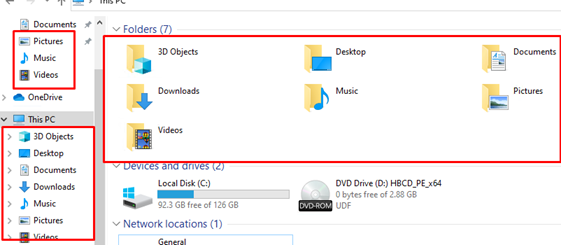
В Windows нет нормальных встроенных средств для скрытия стандартных папок в проводнике. Вы можете скрыть файлы стандартных библиотек в проводнике Windows через реестр. Ниже указан список путей реестра для стандартных библиотек Windows:
| Папка | Путь в реестре |
| Pictures |
HKLM\SOFTWARE\Microsoft\Windows\CurrentVersion\Explorer\FolderDescriptions\{0ddd015d-b06c-45d5-8c4c-f59713854639}\PropertyBag
|
| Videos |
HKLM\SOFTWARE\Microsoft\Windows\CurrentVersion\Explorer\FolderDescriptions\{35286a68-3c57-41a1-bbb1-0eae73d76c95}\PropertyBag
|
| Downloads |
HKLM\SOFTWARE\Microsoft\Windows\CurrentVersion\Explorer\FolderDescriptions\{7d83ee9b-2244-4e70-b1f5-5393042af1e4}\PropertyBag
|
| Music |
HKLM\SOFTWARE\Microsoft\Windows\CurrentVersion\Explorer\FolderDescriptions\{a0c69a99-21c8-4671-8703-7934162fcf1d}\PropertyBag
|
| Desktop |
HKLM\SOFTWARE\Microsoft\Windows\CurrentVersion\Explorer\FolderDescriptions\{B4BFCC3A-DB2C-424C-B029-7FE99A87C641}\PropertyBag
|
| Documents |
HKLM\SOFTWARE\Microsoft\Windows\CurrentVersion\Explorer\FolderDescriptions\{f42ee2d3-909f-4907-8871-4c22fc0bf756}\PropertyBag
|
| 3D Objects (Объемные объекты) |
HKLM\SOFTWARE\Microsoft\Windows\CurrentVersion\Explorer\FolderDescriptions\{31C0DD25-9439-4F12-BF41-7FF4EDA38722}\PropertyBag
|
| Removable drives |
HKEY_LOCAL_MACHINE\SOFTWARE\Microsoft\Windows\CurrentVersion\Explorer\Desktop\NameSpace\DelegateFolders\{F5FB2C77-0E2F-4A16-A381-3E560C68BC83}
(это только скроет, но не запретит доступ в внешним USB накопителям) |
Например, чтобы скрыть в проводнике папку Pictures:
- Откройте редактор реестра
regedit.exe
; - Перейдите в раздел
HKLM\SOFTWARE\Microsoft\Windows\CurrentVersion\Explorer\FolderDescriptions\{0ddd015d-b06c-45d5-8c4c-f59713854639}\PropertyBag - Измените значение параметра ThisPCPolicy на Hide;
По умолчанию здесь указано Show.
- Перезагрузите компьютер и проверьте, что папка Pictures исчезла из проводника.
По аналогии можно скрыть и все остальные папки.
В сети с доменом Active Directory вы можете скрыть папки библиотек в проводнике File Explorer на всех компьютерах с помощью групповых политик.
- Откройте консоль
GPMC.msc
и назначьте новую политику на OU с компьютерами; - Перейдите в раздел Computer Configuration -> Preferences -> Windows Settings -> Registry -> New -> Registry Item;
- Для каждого их ключей в таблице создайте значение вида:
Action: Update Hive: HKEY_LOCAL_MACHINE Key Path: SOFTWARE\Microsoft\Windows\CurrentVersion\Explorer\FolderDescriptions\{0ddd015d-b06c-45d5-8c4c-f59713854639}\PropertyBag Value name: ThisPCPolicy Value type: REG_SZ Value date: Hide - По аналогии создайте параметры реестра для всех библиотек, которые вы хотите скрыть;
- Перезагрузите компьютер, чтобы обновить настройки GPO и убедитесь, что указанные библиотеки исчезли из проводника.
Дополнительно вы можете скрыть в проводнике следующие стандартные папки:
Скрыть папку быстрого доступа (Quick Access):
- Путь:
HKEY_LOCAL_MACHINE\SOFTWARE\Microsoft\Windows\CurrentVersion\Explorer - Тип: REG_DWORD
- Параметр:
HubMode - Значение: 1
Спрятать значок доступа к сетевому окружению (Network):
- Путь:
HKEY_CURRENT_USER\Software\Microsoft\Windows\CurrentVersion\Explorer\CLSID\{F02C1A0D-BE21-4350-88B0-7367FC96EF3C}\ShellFolder - Параметр:
Attributes - Тип: REG_DWORD
- Значение: 00100000
Скрыть значок OneDrive
- Путь:
HKEY_CURRENT_USER\Software\Classes\CLSID\{018D5C66-4533-4307-9B53-224DE2ED1FE6} - Параметр:
System.IsPinnedToNameSpaceTree - Тип: REG_DWORD
- Значение: 0
Таким образом можно сделать интерфейс проводника Windows максимально компактным.
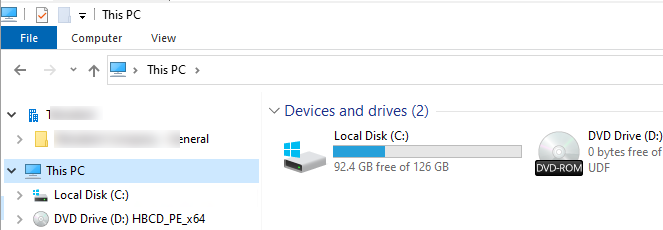
Также через реестр можно изменить папку по-умолчнаию, которая открывается при запуске проводника.
- Путь:
HKEY_CURRENT_USER\Software\Microsoft\Windows\CurrentVersion\Explorer\Advanced - Тип: REG_DWORD
- Параметр:
LaunchTo
Возможные значения: 1 (Этот компьютер), 2 (Быстрый доступ), 3 (Папка Downloads)
Это параметр настраивает опцию Open File Explorer to в свойствах проводника.
Также вы можете отключить показ в проводнике последних открытых папок и файлов:
- Путь:
HKEY_CURRENT_USER\Software\Microsoft\Windows\CurrentVersion\Explorer - Тип: REG_DWORD
-
ShowFrequent
= 0 (скрыть последние открытые папки) -
ShowRecent
= 0 (скрыть последние открытые файлы)
Это будет работать как в Windows 10/11, так и в Windows Server 2022/2019/2016 (в моем примере я скрыл папки стандартные библиотеки в проводнике на RDS сервере).
В Проводнике Windows последних версий присутствует функциональность, которой мало кто пользуется — Библиотеки. Однако, если знать об этой возможности, можно найти её полезные применения.
В этой инструкции о том, как включить показ библиотек в Проводнике Windows 11/10, настроить имеющиеся и создать собственные библиотеки.
Включение библиотек в Проводнике
Библиотеки в Windows представляют собой инструмент для доступа к содержимому сразу нескольких папок из одного расположения: например, настроив нужным образом библиотеку с изображениями вы можете открыть её и увидеть файлы из выбранных вами папок с изображением в одной «виртуальной» папке: тем, кто знаком с «Галереями» на смартфонах Android, концепция должна быть знакомой.
По умолчанию «Библиотеки» скрыты в Проводнике Windows 11 и 10 (но видны в диалоге сохранения файлов). Для того, чтобы включить их отображение, можно выполнить следующие шаги:
- Нажмите правой кнопкой мыши в пустом месте панели слева Проводника.
- Отметьте пункт «Показать библиотеки».
- В результате библиотеки будут отображаться в нижней части панели слева.
Несмотря на то, что стандартные библиотеки имеют те же имена и значки, что папки пользователя «Документы», «Изображения», «Музыка» — это не то же самое, для них есть дополнительные возможности.
Настройка
Настройка имеющихся библиотек выполняется путем следующих действий:
- Нажмите правой кнопкой мыши по нужной библиотеке и выберите пункт «Свойства» в контекстном меню.
- В открывшемся окне свойств библиотеки вы можете добавить папки (или удалить их), содержимое которых будет в неё включено, выбрать вариант оптимизации отображения, включить или отключить показ в области навигации Проводника. Для системных библиотек также доступно восстановление значений по умолчанию.
- Кнопа «Задать папку для сохранения» позволяет установить папку библиотеки, в которую по умолчанию будет производиться сохранение файлов при сохранении в соответствующую библиотеку.
Выполнив необходимые настройки, нажмите «Ок» для их применения.
Создание собственных библиотек
При желании вы не ограничиваться существующими системными библиотеками, а создать собственные:
- Откройте раздел «Библиотеки» в Проводнике, нажмите правой кнопкой мыши в пустом месте правой панели и выберите «Создать» — «Библиотека».
- Укажите имя библиотеки.
- Откройте свойства созданной библиотеки (правый клик — свойства).
- Добавьте нужные папки, выберите папку для сохранения (по умолчанию — первая добавленная), установите значок, выберите вариант оптимизации библиотеки и нажмите «Ок».
Готово, ваша библиотека создана. Если зайти в неё, вы увидите содержимое всех выбранных вами папок в одном расположении:

По умолчанию файлы будут сгруппированы по папкам, но, если вам это не требуется — группировку и другие параметры отображения библиотеки можно настроить в контекстном меню «Вид».
Доступ к библиотеке не обязательно выполнять только из Проводника: вы можете перенести её значок оттуда на рабочий стол мышью, чтобы создать ярлык (который затем можно закрепить на панели задач), либо нажать по нему правой кнопкой мыши и закрепить его в меню «Пуск».
Если вы захотите удалить библиотеку, сделать это можно прямо в разделе «Библиотеки», так же, как и с любым другим файлом или папкой. При этом сами папки, которые включены в библиотеку, затронуты не будут.
Подводя итог, Библиотеки — одна из тех функций Windows, которая большинством пользователей оказывается незамеченной, хотя может оказаться удобной и эффективной для организации доступа к файлам и папкам для некоторых из них.
This tutorial will show you how to remove a included folder or drive from a library for your account in Windows 11.
Windows 7 introduced libraries, which provide users with a single, coherent view of their files even when those files are stored in different locations. Libraries can be configured and organized by a user and a library can contain folders that are found on the user’s computer and also folders that have been shared over a network. Libraries present a simpler view of the underlying storage system because, to the user, the files and folders in a library are displayed in one single view location, no matter where they are actually physically stored.
In File Explorer, users interact with libraries in ways similar to how they would interact with other folders. Libraries are built upon the legacy known folders (such as Camera Roll, Documents, Music, Pictures, Saved Pictures, and Videos), and these known folders are automatically included in the default libraries and set as the default save location.
References:

Windows Libraries — Win32 apps
Windows 7 introduces libraries, which provide users with a single, coherent view of their files even when those files are stored in different locations.
docs.microsoft.com

Windows Libraries
All about Windows Libraries, which are containers for users’ content, such as Documents and Pictures.
docs.microsoft.com
Removing an included folder or drive from a library does not delete the folder/drive or the contents of the folder/drive.
Here’s How:
1 Open Libraries in File Explorer (Win+E).
2 Perform one of the following actions: (see screenshots below)
- Select the library (ex: «Pictures») you want to remove a folder or drive from, click/tap on the See more (3 dots) button on the command bar, and click/tap on Properties.
- Right click or press and hold on the library (ex: «Pictures») you want to remove a folder or drive from, and click/tap on Properties.
3 Select the included folder location you want to remove, and click/tap on Remove. (see screenshot below)
4 Click/tap on OK to apply. (see screenshot below)
That’s it,
Shawn Brink
Related Tutorials
- Add or Remove Libraries in Navigation Pane of File Explorer in Windows 11
- Create New Library in Windows 11
- Include Folder or Drive in Library in Windows 11
- Change Default Save Locations for Libraries in Windows 11
- Change Order of Library Locations in Windows 11
- Restore Default Settings of Library in Windows 11
- Change Icon of Library in Windows 11
- Restore Default Libraries in Windows 11
- Add or Remove Libraries Desktop Icon in Windows 11
Last edited:
-
-
#2
I was never a of fan of Libraries, so I just show and use Quick Access folders. Is there any benefit to using Libraries, instead?
-
- OS
- Windows 11
- Computer type
- Laptop
- Manufacturer/Model
- Microsoft 15″ Surface Laptop 4
- CPU
- AMD Ryzen 7
- Memory
- 8GB
- Graphics Card(s)
- AMD Radeon
- Hard Drives
- 512GB WD SSD
- Internet Speed
- 384 Mbps per attached network device
- Browser
- MS Edge
- Antivirus
- Windows Defender
-
- Operating System
- Windows 11
- Computer type
- PC/Desktop
- Manufacturer/Model
- Dell XPS 8950
- CPU
- 12th Gen Intel(R) Core(TM) i9-12900K, 3200 Mhz, 16 Core(s), 24 Logical Processor(s)
- Memory
- 32 GB DDR5
- Graphics card(s)
- NVIDIA GeForce GTX 1660 Ti
- Monitor(s) Displays
- 32″ Samsung
- Mouse
- Logitech MX Master 3 (BT)
- Keyboard
- Arteck (BT)
- Internet Speed
- 990 Mbps
- Browser
- MS Edge/Floorp
- Antivirus
- Windows Defender/Malwarebytes
-
-
#3
I was never a of fan of Libraries, so I just show and use Quick Access folders. Is there any benefit to using Libraries, instead? [ATTACH type=»full»
Hello dwall,
It really depends on your usage.
Quick access is basically just a place to quickly open recent and pinned locations from. Think shortcuts.
A library is basically a way to access the files from different locations in one place instead.
-
- OS
- Windows 11 Pro for Workstations
- Computer type
- PC/Desktop
- Manufacturer/Model
- Custom self build
- CPU
- Intel i7-8700K 5 GHz
- Motherboard
- ASUS ROG Maximus XI Formula Z390
- Memory
- 64 GB (4x16GB) G.SKILL TridentZ RGB DDR4 3600 MHz (F4-3600C18D-32GTZR)
- Graphics Card(s)
- ASUS ROG-STRIX-GTX1080TI-O11G-GAMING (11GB GDDR5X)
- Sound Card
- Integrated Digital Audio (S/PDIF)
- Monitor(s) Displays
- 2 x Samsung Odyssey G75 27″
- Screen Resolution
- 2560×1440
- Hard Drives
- 1TB Samsung 990 PRO M.2,
4TB Samsung 990 PRO M.2,
8TB WD MyCloudEX2Ultra NAS
- PSU
- Seasonic Prime Titanium 850W
- Case
- Thermaltake Core P3 wall mounted
- Cooling
- Corsair Hydro H115i
- Keyboard
- Logitech wireless K800
- Mouse
- Logitech MX Master 3
- Internet Speed
- 1 Gbps Download and 35 Mbps Upload
- Browser
- Google Chrome
- Antivirus
- Microsoft Defender and Malwarebytes Premium
- Other Info
- Logitech Z625 speaker system,
Logitech BRIO 4K Pro webcam,
HP Color LaserJet Pro MFP M477fdn,
CyberPower CP1500PFCLCD
Galaxy S23 Plus phone
-
- Operating System
- Windows 11 Pro
- Computer type
- Laptop
- Manufacturer/Model
- Surface Laptop 7 Copilot+ PC
- CPU
- Snapdragon X Elite (12 core) 3.42 GHz
- Memory
- 16 GB LPDDR5x-7467 MHz
- Monitor(s) Displays
- 15″ HDR
- Screen Resolution
- 2496 x 1664
- Hard Drives
- 1 TB SSD
- Internet Speed
- Wi-Fi 7 and Bluetooth 5.4
- Browser
- Chrome and Edge
- Antivirus
- Windows Defender
-
-
#4
Huh, I thought Libraries were simply a collection of default folder shortcuts already made and that you could add to
-
- OS
- Windows 11
- Computer type
- Laptop
- Manufacturer/Model
- Microsoft 15″ Surface Laptop 4
- CPU
- AMD Ryzen 7
- Memory
- 8GB
- Graphics Card(s)
- AMD Radeon
- Hard Drives
- 512GB WD SSD
- Internet Speed
- 384 Mbps per attached network device
- Browser
- MS Edge
- Antivirus
- Windows Defender
-
- Operating System
- Windows 11
- Computer type
- PC/Desktop
- Manufacturer/Model
- Dell XPS 8950
- CPU
- 12th Gen Intel(R) Core(TM) i9-12900K, 3200 Mhz, 16 Core(s), 24 Logical Processor(s)
- Memory
- 32 GB DDR5
- Graphics card(s)
- NVIDIA GeForce GTX 1660 Ti
- Monitor(s) Displays
- 32″ Samsung
- Mouse
- Logitech MX Master 3 (BT)
- Keyboard
- Arteck (BT)
- Internet Speed
- 990 Mbps
- Browser
- MS Edge/Floorp
- Antivirus
- Windows Defender/Malwarebytes
-
-
#5
Huh, I thought Libraries were simply a collection of default folder shortcuts already made and that you could add to
A library would be more of a collection of symbolic links or junction points to access from to the source locations.
You can include any folder(s) you want in a library.
Basically, a library is just a way to access different included locations in one place the same way as if accessed directly from the sources.
-
- OS
- Windows 11 Pro for Workstations
- Computer type
- PC/Desktop
- Manufacturer/Model
- Custom self build
- CPU
- Intel i7-8700K 5 GHz
- Motherboard
- ASUS ROG Maximus XI Formula Z390
- Memory
- 64 GB (4x16GB) G.SKILL TridentZ RGB DDR4 3600 MHz (F4-3600C18D-32GTZR)
- Graphics Card(s)
- ASUS ROG-STRIX-GTX1080TI-O11G-GAMING (11GB GDDR5X)
- Sound Card
- Integrated Digital Audio (S/PDIF)
- Monitor(s) Displays
- 2 x Samsung Odyssey G75 27″
- Screen Resolution
- 2560×1440
- Hard Drives
- 1TB Samsung 990 PRO M.2,
4TB Samsung 990 PRO M.2,
8TB WD MyCloudEX2Ultra NAS
- PSU
- Seasonic Prime Titanium 850W
- Case
- Thermaltake Core P3 wall mounted
- Cooling
- Corsair Hydro H115i
- Keyboard
- Logitech wireless K800
- Mouse
- Logitech MX Master 3
- Internet Speed
- 1 Gbps Download and 35 Mbps Upload
- Browser
- Google Chrome
- Antivirus
- Microsoft Defender and Malwarebytes Premium
- Other Info
- Logitech Z625 speaker system,
Logitech BRIO 4K Pro webcam,
HP Color LaserJet Pro MFP M477fdn,
CyberPower CP1500PFCLCD
Galaxy S23 Plus phone
-
- Operating System
- Windows 11 Pro
- Computer type
- Laptop
- Manufacturer/Model
- Surface Laptop 7 Copilot+ PC
- CPU
- Snapdragon X Elite (12 core) 3.42 GHz
- Memory
- 16 GB LPDDR5x-7467 MHz
- Monitor(s) Displays
- 15″ HDR
- Screen Resolution
- 2496 x 1664
- Hard Drives
- 1 TB SSD
- Internet Speed
- Wi-Fi 7 and Bluetooth 5.4
- Browser
- Chrome and Edge
- Antivirus
- Windows Defender
-
-
#6
Well, I am not seeing the benefit of using them over my currently using Quick Access for my most used locations as they seem to provide the same service and would be a bit redundant.
-
- OS
- Windows 11
- Computer type
- Laptop
- Manufacturer/Model
- Microsoft 15″ Surface Laptop 4
- CPU
- AMD Ryzen 7
- Memory
- 8GB
- Graphics Card(s)
- AMD Radeon
- Hard Drives
- 512GB WD SSD
- Internet Speed
- 384 Mbps per attached network device
- Browser
- MS Edge
- Antivirus
- Windows Defender
-
- Operating System
- Windows 11
- Computer type
- PC/Desktop
- Manufacturer/Model
- Dell XPS 8950
- CPU
- 12th Gen Intel(R) Core(TM) i9-12900K, 3200 Mhz, 16 Core(s), 24 Logical Processor(s)
- Memory
- 32 GB DDR5
- Graphics card(s)
- NVIDIA GeForce GTX 1660 Ti
- Monitor(s) Displays
- 32″ Samsung
- Mouse
- Logitech MX Master 3 (BT)
- Keyboard
- Arteck (BT)
- Internet Speed
- 990 Mbps
- Browser
- MS Edge/Floorp
- Antivirus
- Windows Defender/Malwarebytes
-
-
#7
Well, I am not seeing the benefit of using them over my currently using Quick Access for my most used locations as they seem to provide the same service and would be a bit redundant.
I’d use whatever works best for you.
-
- OS
- Windows 11 Pro for Workstations
- Computer type
- PC/Desktop
- Manufacturer/Model
- Custom self build
- CPU
- Intel i7-8700K 5 GHz
- Motherboard
- ASUS ROG Maximus XI Formula Z390
- Memory
- 64 GB (4x16GB) G.SKILL TridentZ RGB DDR4 3600 MHz (F4-3600C18D-32GTZR)
- Graphics Card(s)
- ASUS ROG-STRIX-GTX1080TI-O11G-GAMING (11GB GDDR5X)
- Sound Card
- Integrated Digital Audio (S/PDIF)
- Monitor(s) Displays
- 2 x Samsung Odyssey G75 27″
- Screen Resolution
- 2560×1440
- Hard Drives
- 1TB Samsung 990 PRO M.2,
4TB Samsung 990 PRO M.2,
8TB WD MyCloudEX2Ultra NAS
- PSU
- Seasonic Prime Titanium 850W
- Case
- Thermaltake Core P3 wall mounted
- Cooling
- Corsair Hydro H115i
- Keyboard
- Logitech wireless K800
- Mouse
- Logitech MX Master 3
- Internet Speed
- 1 Gbps Download and 35 Mbps Upload
- Browser
- Google Chrome
- Antivirus
- Microsoft Defender and Malwarebytes Premium
- Other Info
- Logitech Z625 speaker system,
Logitech BRIO 4K Pro webcam,
HP Color LaserJet Pro MFP M477fdn,
CyberPower CP1500PFCLCD
Galaxy S23 Plus phone
-
- Operating System
- Windows 11 Pro
- Computer type
- Laptop
- Manufacturer/Model
- Surface Laptop 7 Copilot+ PC
- CPU
- Snapdragon X Elite (12 core) 3.42 GHz
- Memory
- 16 GB LPDDR5x-7467 MHz
- Monitor(s) Displays
- 15″ HDR
- Screen Resolution
- 2496 x 1664
- Hard Drives
- 1 TB SSD
- Internet Speed
- Wi-Fi 7 and Bluetooth 5.4
- Browser
- Chrome and Edge
- Antivirus
- Windows Defender
-
-
#8
Is is possible to also stop folders from appearing in libraries again? The new Media Player in Windows 11 always starts indexing the OneDrive folder for music because that folder gets added to the Music library even after being removed from it. That happens after every restart of the machine.
-
- OS
- Windows 11
- Computer type
- PC/Desktop
- CPU
- AMD Ryzen 7 2700X, OctalCore, AM4
- Motherboard
- Gigabyte X470 Aorus Ultra Gaming
- Memory
- Corsair Vengeance LPX, 4x8GB
- Graphics Card(s)
- Gigabyte GeForce GTX 1070 8GB
- Sound Card
- Realtek ALC1220 @ AMD K17
- Monitor(s) Displays
- Zowie XL LCD, BenQ RL2455HM
- Screen Resolution
- 1080p
- PSU
- Corsair TX650M 650W

